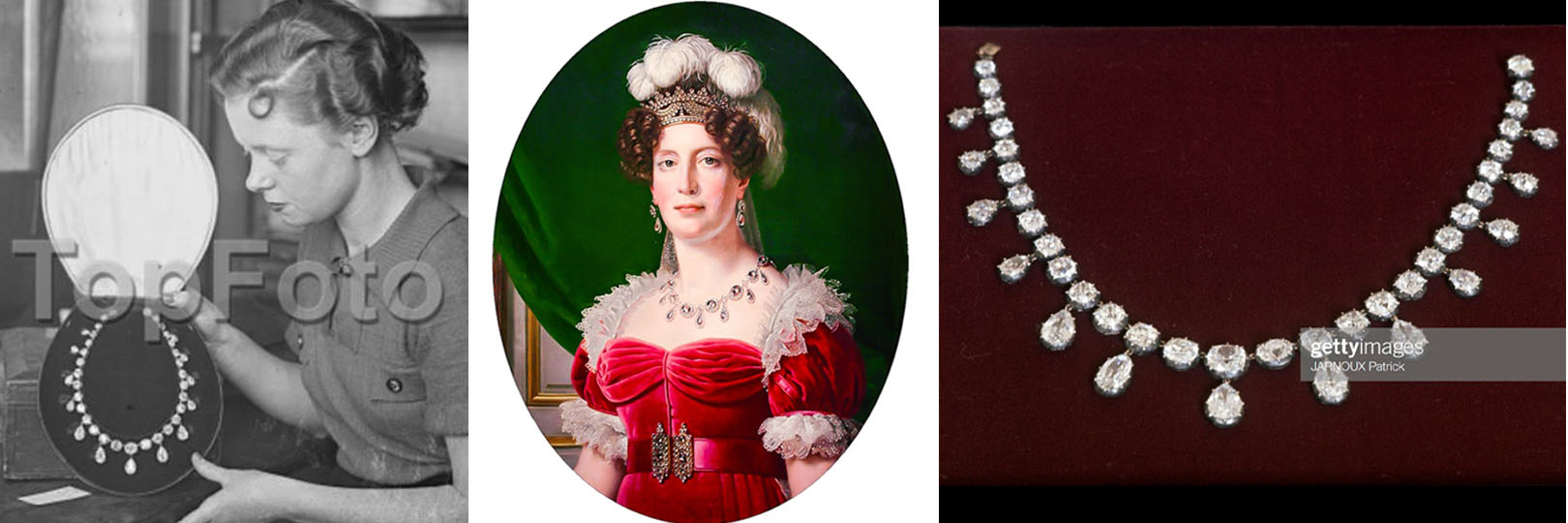Nothing makes me happy than to share excerpts on Indian royal jewellery with you all. This time, we will explore the magnificent jewels of Maharaja of Darbhanga. So, ladies and gentleman, come aboard with me and let’s travel to Bihar!
Darbhanga Raj, also known as Raj Darbhanga was ruled by The Khandaval dynasty belonging to Maithil Brahmins from 1577 until India’s Independence in 1947. Extending from the Nepal frontier to the Ganges; it was founded by Mahesh Thakur, who received the Raj from the emperor Akbar in the 16th century. The family and descendants of Mahesh Thakur gradually expanded their territory and soon became India’s largest and richest zamindars who owned a spectacular collection of jewels. The last Maharaja Of Darbhanga, Maharaja Kameshwar Singh Bahadur who ruled from 1929-1947 was the thirds richest man in India!

Image 1:Maharaja Lakshmeshwar Singh Bahadur (ruled 1860 to 1898). His statue was installed in Calcutta in 1904 at Dalhousie Square as a tribute to him by Edward Onslow Ford.
Images 2: Maharaja Rameshwar Singh Bahadur (ruled 1898 to 1929) the brother of Maharaja Sir Lakshmeshwar Singh of Darbhanga.
Images 3: Maharaja Kameshwar Singh Bahadur (ruled 1929 to the independence of India in 1947).
Images 4: Darbhanga Fort.

Maharaja Kameshwar Singh (left) with his brother Raja Bahadur Vishveshwar Singh (right) and Maharana of Dholpur (centre)
Maharaja Lakshmeshwar Singh Bahadur, who ruled from 1860 to 1898 was the biggest philanthropist among the Darbhanga rulers. He devoted himself to public works and won a reputation as a progressive and liberal-minded statesman. His younger brother Maharaja Rameshwar Singh Bahadur (1898 to 1929) was the father of Maharaja Kameshwar Singh Bahadur, who ruled from 1929 until India’s Independence and contributed to the expansion of industrial and business sectors.

Featured above is the Darbhanga Crown and the jewels adorned by the maharaja.
With an enormous possession of wealth owned by the Maharaja Of Darbhanga, they soon became bankers to several Indian royal families like Cooch Behar; Dumraon, Tekari; who borrowed money by selling their royal heirloom jewels. This resulted in a vast jewellery collection of Darbhanga which was considered better than the collection owned by the Nizam of Hyderabad.

Featured above are the Dholepore Jigah Pearl Tiara and a Pearl Satlara from the royal collection.
One of the jewels acquired by the Maharaja Of Darbhanga is the largest emerald weighing 217.80 cts, “The Mogul Mughal Emerald” which was kept as a security against the money borrowed by Maharaja of Cooch Behar.

Maharaja Kameshwar Singh Bahadur is wearing the Mogul Mughal Emerald.
Diving a little deeper into the provenance of the emerald.
The Mogul Mughal Emerald is one of the most unique rectangular tablet, bearing a date of 1107 A.H. (1695-1696 AD). This Colombia emerald was sold to Aurangzeb the last ruler of the Mughal Empire in India. One side of the tablet showcases the inscription of Islamic prayers along with 14 sacred names of Prophet Mohammed’s family members, and the other side is engraved with scrolling foliage and peppy flowers. This largest and the most spectacular emerald was sold by Christie’s in 2001 and is currently in the possession of the Museum of Islamic Art, Doha, Qatar.

Besides acquiring several important jewels against the security of loans from royal Indian families; the Maharaja of Darbhanga also acquired a few treasures from the auction houses.
One such important piece brought by Maharaja Kameshwar Singh Bahadur is Marie Antoinette, Queen of France’s Riviere diamond necklace that was presented to her by the city of Paris during her wedding. The necklace crafted with 29 graduating stones and 13 pear shape pendant from alternative collets was auctioned at Sotheby’s London in 1937. The auction had gained a lot of popularity and during the procedure, BBC installed a microphone to make a live broadcast about the sale.

Naulaka necklace made with pearls, diamonds, rubies and emeralds.
Lastly, excited to highlight one of the most important jewels from the treasury of the Maharajas of Darbhanga: the Naulaka Haar of Maratha Peshwa Bajirao 1. The story goes, since Bajirao had paid nine lakhs in its making, the necklace was named ‘Naulaka’. The following generations of Bajirao added more jewels to the necklace, raising its worth to 90 lakhs. The necklace exchanged hands from the Peshwa to the Rana Jang Bahadur of Nepal and when the successors of Rana needed money, it made its way to the treasury of Maharaja of Darbhanga.

Below is the list of jewels acquired by the Darbhanga family.
1) A 140cts Pesha Diamonds of Peshwa Bajirao.
2️) Pearl crown of Rana Of Dholpur. (Image 1 )
3) Emerald Goblet of Wajid Ali Shah.
4) Pearls and diamond important jewels from Cooch Behar.
5) Buttons, Rings and a lot more!
However; after Independence Zamindari of Darbhanga was abolished and the family of Darbhanga had to sell their jewels to pay off the taxes imposed by the new government.
I’m thrilled to hear what you guys have to say about the article. Let me know in the comments below.
Credit: Live History India, Pratiek Dhadha, Akshay Chavan.
Disclaimer: The above images belong to their respective sources, where rights may be held. Usage here is for information/reference purpose only.
